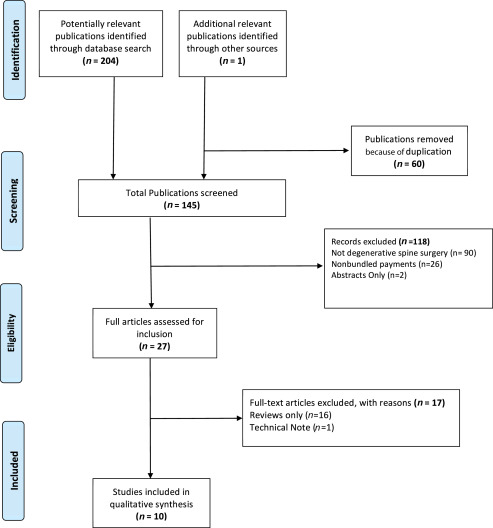
Imagine dining at a restaurant where, rather than paying separately for your starter, main dish, and dessert, you pay a set price for the whole meal. This embodies the concept of a bundled payment strategy in health care. Instead of charging patients and insurers for every single test, treatment, or medical visit during a healthcare episode—such as a knee replacement—providers obtain one all-encompassing payment for all services related to a specific treatment or condition over a specified time frame. While this payment method was voluntarily piloted for the previous two decades, the upcoming requirement for bundled payments across numerous hospitals for particular surgical procedures starting in January 2026 raises the question: Will this achieve the beneficial effects that Medicare anticipates?
This strategy theoretically promotes collaboration among hospitals and physicians, targeting improved outcomes at a reduced overall price. Transferring financial risk from health insurance companies to providers could motivate institutions to offer coordinated, efficient care by holding them accountable for both the cost and quality of care during the episode, thereby aligning financial incentives among providers.
CMS has initiated various bundled payment schemes over the past twenty years, but the most significant programs were Bundled Payments for Care Improvement (BPCI) and its successor, Bundled Payments for Care Improvement Advanced (BPCI-A). Hospitals volunteered to accept bundled payments for a wide array of clinical and surgical episodes, ranging from hip replacements to heart failure admissions. If they managed to keep costs below the benchmark established by CMS, they received a financial incentive. Conversely, exceeding costs over the benchmark incurred a penalty payment to CMS.
Most existing bundles involve site-neutral 90-day episodes that initiate with a hospital admission or outpatient procedure and conclude post-acute recovery. They encompass hospitals, physician groups, skilled nursing facilities, home health agencies, etc., bringing everyone under a unified target price. Bundled models differ by payment timing.
– Prospective models (e.g., BPCI Model 4) provide a single upfront payment, which then allocates funds to clinicians and ancillary providers.
– Retrospective models (e.g., CJR) pay fee-for-service throughout the episode, reconcile total costs against a benchmark after several months, and distribute bonuses or clawbacks.
Benchmarks generally mix each hospital’s historical expenditures and regional averages, with adjustments for case-mix to reduce patient selection bias. To prevent frequent readmissions, reconciliation payments depend on complication rates, readmissions, and patient-reported outcomes. For instance, CJR withholds up to 5 percent if a hospital’s composite quality score declines. While BPCI-A is optional, CJR and the upcoming TEAM model are obligatory in certain markets—indicating that CMS is ready to transition from pilot programs to broader systemic pressure.
Bundled payments appear effective in theory, yet encounter significant hurdles in practice. Initially, they added to the administrative load that hospitals and providers were already struggling to handle. Additionally, while bundled payments were intended to foster care coordination among hospitals, providers, and rehabilitation, they led to cost-shifting to other specialists and rewarded hospitals for reducing payments to rehab facilities without decreasing expenses at their own sites. Furthermore, bundled payment frameworks penalized hospitals treating medically or socially high-risk patients by not fully recognizing patient complexity.
Notwithstanding these challenges, early outcomes from bundled payment initiatives showed promise in specific areas. Bundled payments for hip and knee replacements resulted in decreased Medicare expenditures while maintaining quality of care. Motivated by these results, CMS broadened the scope of bundled payments to include more clinical conditions and surgical procedures. Hospitals succeeded in cutting costs for these hospitalizations and saved CMS some money, but as a result, CMS ended up providing them significant bonuses. Ultimately, while CMS realized minor savings in some bundled payment schemes, they spent more than they saved in others. Bundled payment programs also financially penalized hospitals caring for high-risk patients, potentially exacerbating existing disparities. Thus far, bundled payment programs have not yet achieved the anticipated savings many hoped they would deliver.
The implementation significantly influences both present and upcoming healthcare providers. If risk adjustment does not accurately reflect reality, safety-net hospitals serving medically complex patients might incur penalties that exacerbate resource disparities. Consequently, the shift towards more accurate demographic risk adjustment in newer models is vital for achieving equitable physician compensation. Bundles incentivize surgeons who collaborate on discharge plans with internists and physical therapists while penalizing isolated decision-making. Moreover, managing a 90-day episode necessitates integration across EHRs, post-acute partners, and claims data—often facing limited interoperability. Initial bundled model practices reported spending over $12,000 per physician each year on additional staffing and IT just to meet increasingly intricate reconciliation mandates. Nevertheless, when bundles focus on surgical episodes with clearly outlined care pathways, physician groups can cut costs and engage in significant shared savings—$421 million across the first three years of BPCI-A alone. In 2026, Medicare is set to implement mandatory bundled payment for coronary artery bypass grafting,